Propagating beauty and tranquility
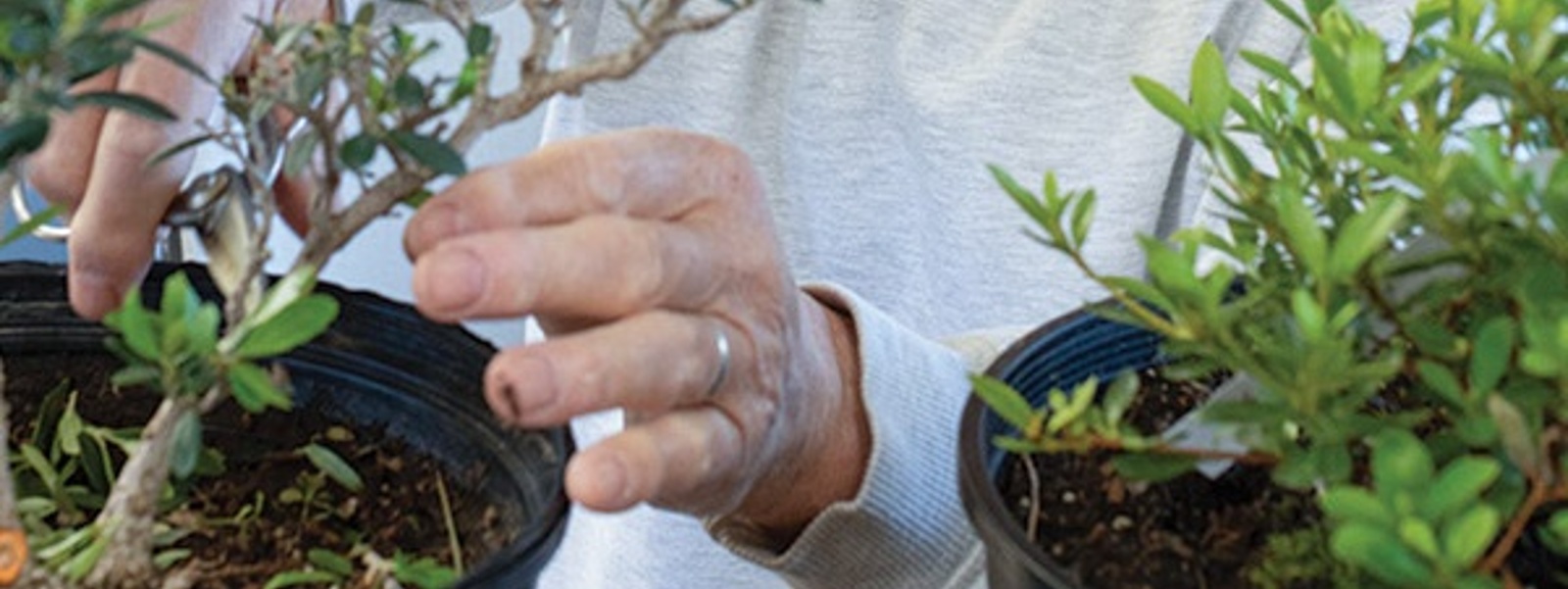
November/December 2023 California Bountiful magazine
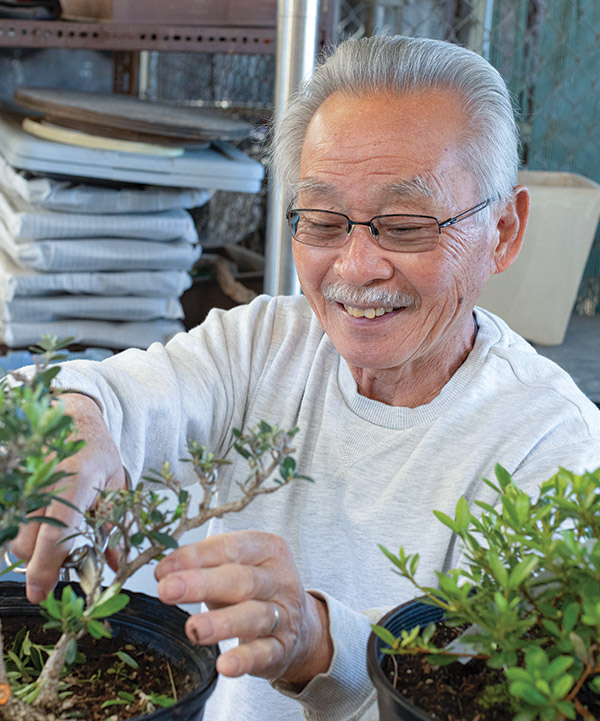
Nurseryman shares bonsai’s benefits to aesthetics and the soul
Story by Linda DuBois
Photos by Bryan Meyer
Gary Nanson worked the graveyard shift as a South Central Los Angeles homicide detective for more than three decades. He constantly dealt with death, trauma and sleep deprivation, but he didn’t realize the toll it was taking on him.
“I didn’t notice because I did this every day. I just accepted it,” Nanson says.
But somebody else would notice.
In the early 1980s, Nanson was in Sylmar to conduct a search warrant when he stumbled upon Fuji Bonsai Nursery. He stopped to look and was amazed by its wide variety of beautiful bonsais—miniature trees that caretakers keep small by growing them in pots and trimming their roots and turn into living art pieces through thoughtful pruning and shaping.
He was warmly welcomed by Shigeru Nagatoshi, who had started the nursery in 1965.
“I ended up walking around with him for like an hour and a half,” Nanson says. “I kept thinking he was the greatest, most humble, calm, pleasant man I’d ever met.”
As Nanson was heading out, the nurseryman told him to return at 9 a.m. Saturday.
“I had Saturday off. So, I showed up at 9, but had no idea what I’d be doing,” Nanson says.
It turns out it was a bonsai class.
“Shig walked up to me and said, ‘Policeman, your life is awful. You need calmness in your life. Sit here.’ So, I sat at a table. … He put a little tree in front of me. He said, ‘First bonsai tree. Keep it your whole life.’”
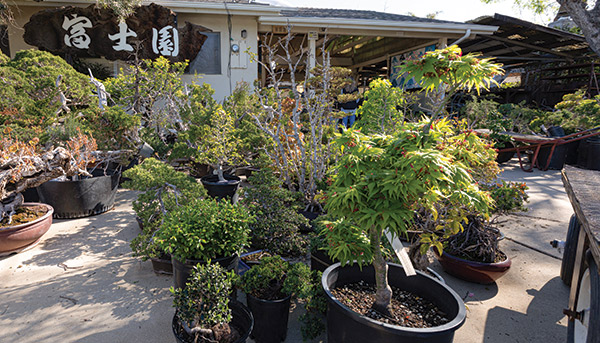
The art of bonsai
During the class, Nagatoshi went over some of the basics of working with a bonsai, such as how and where to cut the branches and how to fertilize it, trim the roots, repot it and wire the branches to shape the tree.
But the techniques were never the emphasis. He encouraged the class to relax and concentrate on nothing but appreciating and nurturing the trees in front of them.
Sure enough, as Nanson focused on the tree, he began to feel at peace and forget all the stressors in his life.
He returned to class week after week. “I found that he was absolutely right,” he says. “My life as a policeman in Los Angeles was just chaos, and this was just what I needed.”
To this day, when Nanson works on a bonsai, he says, “My soul just kind of quiets. The world slows down. I’ve also come to appreciate that not only are we creating beautiful artwork, but we’re also growing something, a natural tree that can last 100 years or longer.
“When I collect or grow a tree, I look to see how it bends, where the strength is, where the front is and how I can display it. I ask a lot of questions and look at it for a long time before I start messing with it.”
Nanson stayed involved with the nursery long after Nagatoshi’s son, Roy, took over in 1998.
The two became good friends and, eventually, Roy Nagatoshi entrusted Nanson with leading Saturday bonsai classes for military veterans who suffer from physical and emotional disabilities.
Nanson also accompanies Nagatoshi on travels to the world’s largest bonsai events and nurseries and to Japan to learn from the world’s greatest masters.
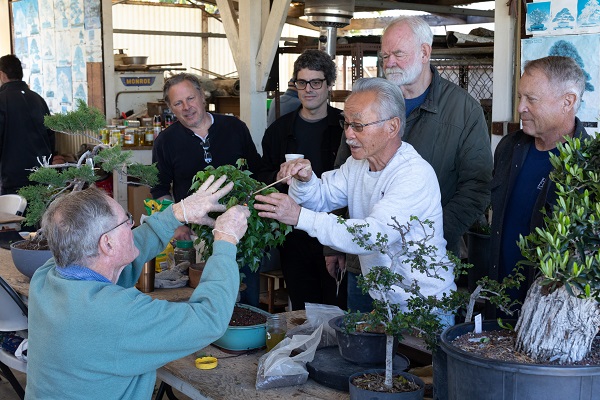
Learning the basics
At the nursery, those new to bonsai can find everything they need to get started, such as the seedlings, pruners, wires, pots, fertilizers and soil mixes.
Occasionally, Nagatoshi buys seedling trees from other nurseries, but often he starts new plants with cuttings from his older plants or seeds he’s collected.
He teaches weekly workshops on Thursdays and Saturdays at the nursery and sometimes teaches abroad in places such as Mexico, South Africa, South America, Australia and New Zealand.
Participants bring their own plants and can ask for advice from Nagatoshi and more advanced students.
Nagatoshi designs his classes so each student will learn to take any plant—even one dug up from a backyard—and mold it into a beautiful bonsai.
His No. 1 tip? “Patience is very important,” he says. “Some people picture grabbing a plant and turning it into a bonsai the next day. It takes many years sometimes to develop into a nice bonsai.
“There are a lot of technical things to learn,” he says, but, like his father, he doesn’t adhere to strict rules.
Nor is he a fan of bonsais that look overly sculpted. “To me, the real quality of creating a bonsai is you do only maybe the first 10% of it and leave the rest for nature to mold into the beautiful tree.”
Nagatoshi finds that he sometimes has to remind students not to compare their work with other students’. “People tend to think, ‘I want to create a better bonsai than his.’ I tell them, ‘Once you get trapped into competing, you are in the wrong place. You’re not really enjoying the art of bonsai.’”
Students are drawn to his classes for a variety of reasons. Often, they simply think bonsais are pretty and would like to create their own. Others are recently retired and seeking a hobby, or, like Nanson, they need a distraction from stressful lives. Classes draw all different ages, but about 70% are male.
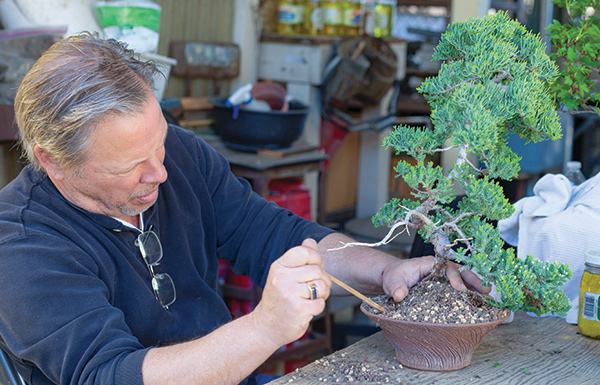
Keeping a bonsai healthy for generations
Two mistakes bonsai beginners often make is choosing the wrong tree and trying to grow it indoors, Nagatoshi says.
“There are so many different climate areas in California, so it’s very important to make sure you have a plant that will do well in your area,” he says.
“Also, customers come and they say, ‘I want to buy a little bonsai tree so I can put it on my coffee table or on my desk next to my computer,’ and I tell them, ‘If you’re going to keep it indoors, forget it. You’re wasting your money. Trees do not grow indoors. They need sunlight and fresh air.’”
He also reminds people that bonsais require the same maintenance care as any trees, such as pruning, watering and fertilizing.
“Plants grow, they produce new shoots, flowers and fruit and it’s not good for them to grow wild. Just like with the hair on our heads, we have to go have it trimmed from time to time or we’re going to become good old ’70s hippies. It’s the same with plants.”
Because bonsais are kept in containers, they eventually will become rootbound. “So, on average, every two to three years, we have to take the tree out of the container and remove some of the roots, and we replant it, usually with a fresh soil mix,” he says.
For beginners, Nagatoshi recommends joining a local bonsai club or attending workshops at a bonsai nursery, where they can get pointers and other resources they need.
“With proper care, a lot of these trees can be handed down from one generation to the next,” he says. “I have one plant that was my father’s first bonsai that he exhibited in a show, I have a tree that used to belong to my father’s master and I’ve got one wisteria that used to be owned by my grandfather—and they’re all doing great.”
Bonsai grower recalls his Hollywood encounter

Those who have seen the 1989 movie “Karate Kid III” may remember an iconic scene where the main character Daniel climbs down a cliff, cuts a priceless naturally growing bonsai out of a rock—and then accidentally drops it into the ocean, severely damaging it.
Roy Nagatoshi, the owner of Fuji Bonsai Nursery in Sylmar, created the bonsai in that scene.
Representatives from Columbia Pictures had asked Nagatoshi to make an artificial bonsai that looked just like one in an image they had.
“I said, ‘OK, yeah, I can give it a shot,” he recalls. “If you remember the story, the tree almost dies, and so I had to create different looks for the tree.”
Nagatoshi also lent the filmmakers several bonsai plants from the nursery to use in the background of other scenes.
“I was right there with the motion picture people watching them film all those scenes. I got to meet all those actors, too,” he says. “It was an interesting experience and it’s kind of fun to be able to tell people about it, but I wouldn’t do that too often. Movie making is pretty time-consuming.”

